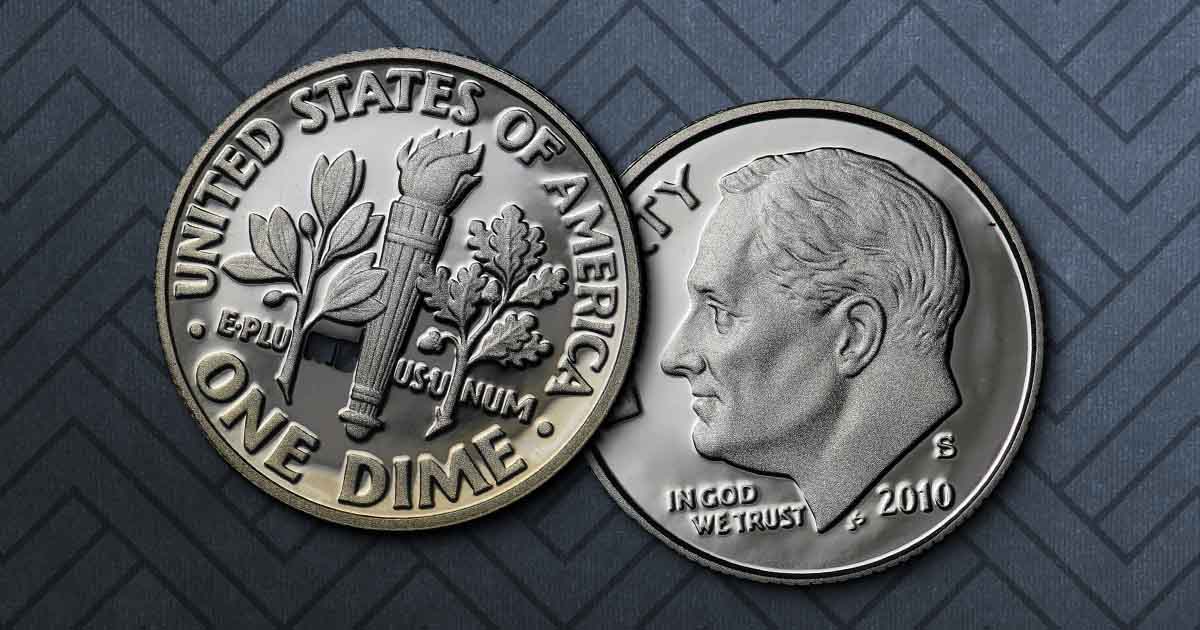
Since 1946, President Franklin Delano Roosevelt’s face has been featured on the dime known by his namesake FDR. President FDR is not the only face depicted on a dime, but he is the only President or elected official whose likeness is on a dime.
Roosevelt’s Portrait on the Dime
The Roosevelt dime was designed by John Sinnock, whose initials are found near the bottom of President Roosevelt’s neck. Sinnock used a composite of several photographs of FDR’s likeness to craft the dignified profile view, but his design was met with some criticism.
The criticism came from the artist who claimed that Sinnock used her design as his own.
Who Sculpted Roosevelt’s Portrait?
As a child, Selma Hortense Burke often played with the clay in a riverbed near her home in Mooresville, North Carolina. She drew inspiration from her grandmother, who was a painter and pursued art as a career.
After she earned multiple college degrees and awards for her work, Selma traveled abroad and found work under Henry Matisse in Paris.
After returning to the United States, Selma H. Burke won a Commission of Fine Arts competition in 1943. This commission was to sculpt President Roosevelt’s portrait on a plaque for the Recorder of Deeds Building in the nation’s capital.
Burke found sculpting a portrait without a live model difficult, so she wrote a letter to the White House requesting a live session to sketch the President.
President Roosevelt accepted her request, and she met with him in February 1944. Selma sketched FDR’s likeness on a brown paper bag and was invited to return the next day. The following year, Eleanor Roosevelt visited Burke to assess her progress on the sculpture and complained that Franklin looked too young. Selma H. Burke’s reply was, “I didn’t make it for today; I made it for tomorrow and tomorrow.”
Franklin Delano Roosevelt died several months later and never saw the sculptured plaque unveiled.
The Release of the Roosevelt Dime
Following his death, the U.S. Mint and Congress elected to honor his memory and commemorate the March of Dimes, which he had founded, with a dime bearing his likeness. John Sinnock was the designer chosen to sculpt the dime since he had sculpted other Presidents while teaching at the Pennsylvania Museum School of Industrial Art.
Sinnock had worked for the U.S. Mint as an engraver and designed Presidential medals for Calvin Coolidge, Herbert Hoover, and President Roosevelt’s inauguration medal.
The Roosevelt dime was first released on January 30, 1946, which would have been President Roosevelt’s 64th birthday. The release had been scheduled for February 5 of that year but was moved up to align with FDR’s day of birth.
After its release, Selma H. Burke claimed that Sinnock’s portrait looked remarkably like her own. Some agreed, including Roosevelt’s own son.
Nearly 80 years later, some numismatists and historians are convinced that Sinnock used Burke’s design. Others have suggested there are noticeable differences when comparing the two profiles side-by-side, especially in the nose and hair.
The U.S. Mint and Congress did not credit Burke with the design, but the Smithsonian American Art Museum did.
Burke continued working as a sculptor and established two institutions dedicated to the arts in Pittsburg and New York City. President Jimmy Carter presented Selma Burke with the Women’s Caucus for Art Lifetime Achievement Award in 1979.
Other Portraits on Dimes
Other portraits used for previous issues of U.S. dimes depicted allegorical representations of virtues and Greco-Roman deities. At least two of those issues depicted the faces of living humans that may have been identified but not confirmed. The 1940 dime continues this tradition, featuring Liberty’s enigmatic profile—a design by Adolph A. Weinman, widely believed to be inspired by Elsie Stevens, though this has never been definitively proven.
The Mercury Dime’s Mystery Model
Adolph A. Weinman designed the 1916-1945 Mercury dimes, which are also known as Winged Liberty Head dimes, as the virtue depicted was Liberty wearing a Phrygian cap.
Weinman never named the model used for the Mercury dime and no model claimed to be on the dime. Many believe the portrayal of Liberty was based on a bust of Elsie Stevens sculpted by Weinman in 1913.
Elsie and her husband, Wallace Stevens, a lawyer and poet, had rented an apartment from Weinman from 1909 through 1916. In an unpublished iteration of his autobiography, former U.S. Mint Director Robert W. Wooley wrote that Weinman told him the model was the wife of a lawyer who lived above his Manhattan apartment.
In a later version, Wooley omitted the proximity between Weinman and his model, stating that it was the wife of a lawyer Weinman was friends with. In the 1966 release of Wallace Steven’s Letters, Holly Stevens, Elsie and Wallace Steven’s daughter, stated that her mother was the model for Weinman’s dime and half dollar.




